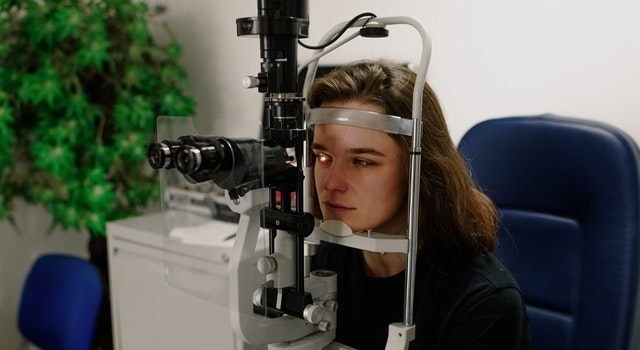
If you’ve had your eyes examined, your eye doctor likely asked you to read letters and numbers from an eye chart. That was to check for changes in your visual acuity, or sharpness of vision. Visual acuity can be measured in different ways, but the most common way is by using a Snellen eye chart — a chart with different sized letters and numbers in descending rows.
In 1862 Dr. Herman Snellen, an eye doctor in Holland, created the Snellen eye chart and coined the term ‘20/20 vision.’ Below we explore what that really means.
What is 20/20 Vision?
20/20 vision describes how clearly a person with normal visual clarity can see. All measurements of vision are taken when the patient is located 20 feet from the eye chart. A person with 20/20 vision can clearly read a certain row of small letters on the Snellen chart from 20 feet away.
A person with 20/40 vision who is 20 feet from the eye chart can only see the letters double the size of the letters that a person with normal vision can see.
Likewise, a person with 20/80 vision, who is 20 feet from the chart can only see letters four times larger than those seen by a person with 20/20 sight.
Legal blindness is considered to be 20/200 vision, and means that an individual with this sight at 20 feet away from the eye chart can only see letters 10 times larger than those seen by a person with 20/20 sight.
Is 20/20 Perfect Vision?
Not necessarily. This is a standard of measurement used by optometrists to help assess distance vision and prescribe eyeglasses and contacts, but vision is more than just 20/20 sight.
Several other visual skills are essential to functioning in today’s world and even a person with 20/20 vision can lack other necessary visual skills. Well-developed visual skills help individuals succeed at school, in the workplace and sports. For example, skills like eye tracking, teaming, convergence and visual processing all need to be up to par for a person to truly have ‘perfect vision.’ Visual acuity is just one piece of the puzzle.
Additionally, 20/20 isn’t the clearest possible vision. Some people have 20/15 or even 20/10 vision. This means their visual acuity is higher than a person with 20/20 sight.
How To Correct Visual Acuity
The first step in correcting a visual acuity problem is to undergo a comprehensive eye exam with your local optometrist. If your vision requires correction, your eye doctor will explain the different methods of vision correction, including prescription glasses and contact lenses.
Some people choose to correct their vision with refractive surgery, but like any surgery, it comes with the risk of surgical complications.
At Tesla Practice, our goal is to help all patients achieve clear, crisp and comfortable vision, no matter their visual condition.
Not sure you have 20/20 vision? Call Tesla Practice in Tesla City today to schedule your eye exam today!
Q: What conditions can impair visual acuity?
- A: Conditions like astigmatism, nearsightedness (myopia), farsightedness (hyperopia) and an age-related loss of focusing ability (presbyopia) all impact sharpness of vision at various distances. Other conditions, including dry eye syndrome and cataracts, can also affect visual clarity.
Q: How common is it to have 20/20 vision?
- A: Approximately a third of adults in America have 20/20 vision without the use of any vision correction, and 75% of American adults have 20/20 vision when wearing prescription lenses or other forms of vision correction.
Quality Frames For Prescription Eyeglasses & Computer Glasses. Visit Tesla Practice for an eye exam and eyeglasses that match your style.
